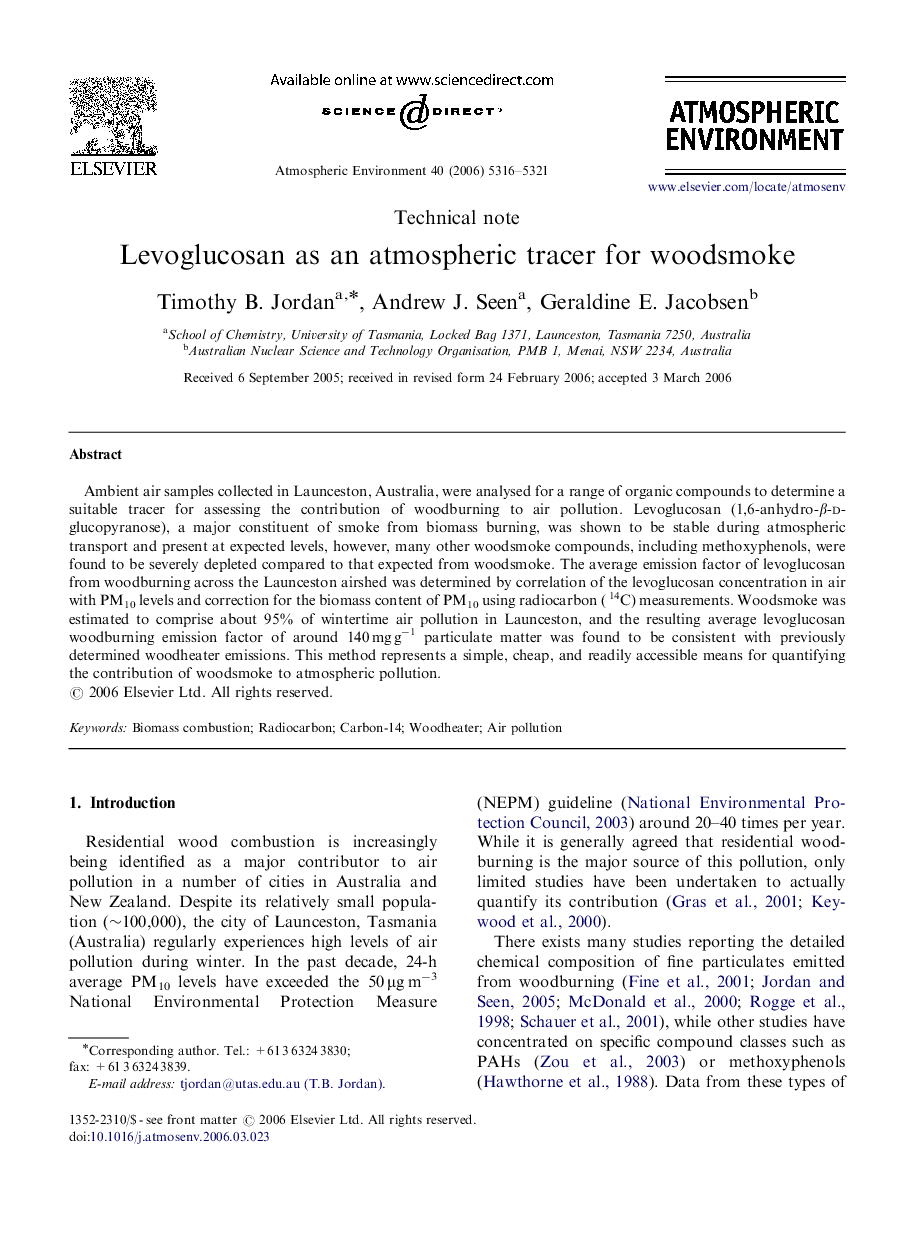| Article ID | Journal | Published Year | Pages | File Type |
|---|---|---|---|---|
| 4444698 | Atmospheric Environment | 2006 | 6 Pages |
Ambient air samples collected in Launceston, Australia, were analysed for a range of organic compounds to determine a suitable tracer for assessing the contribution of woodburning to air pollution. Levoglucosan (1,6-anhydro-β-d-glucopyranose), a major constituent of smoke from biomass burning, was shown to be stable during atmospheric transport and present at expected levels, however, many other woodsmoke compounds, including methoxyphenols, were found to be severely depleted compared to that expected from woodsmoke. The average emission factor of levoglucosan from woodburning across the Launceston airshed was determined by correlation of the levoglucosan concentration in air with PM10 levels and correction for the biomass content of PM10 using radiocarbon (14C) measurements. Woodsmoke was estimated to comprise about 95% of wintertime air pollution in Launceston, and the resulting average levoglucosan woodburning emission factor of around 140 mg g−1 particulate matter was found to be consistent with previously determined woodheater emissions. This method represents a simple, cheap, and readily accessible means for quantifying the contribution of woodsmoke to atmospheric pollution.
